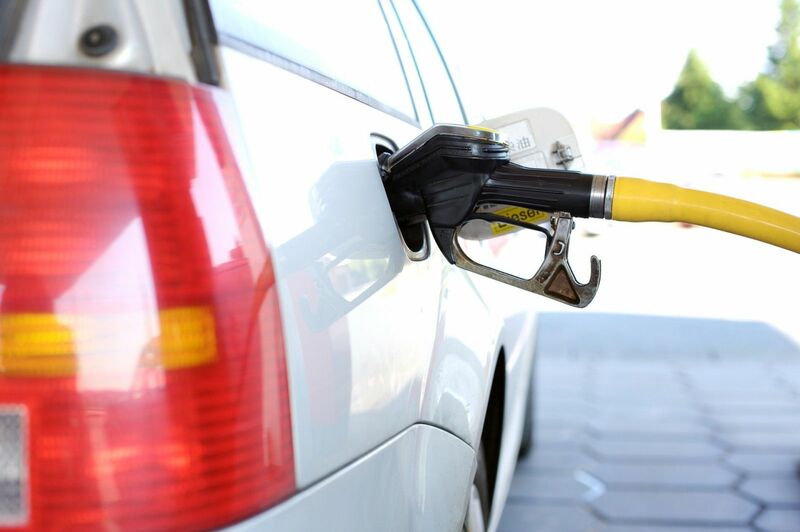
While U.S. energy policy continues to favor alternative and renewable fuels, and the number of EVs on the road is climbing, gasoline continues to be the fuel that powers most automobiles.
Gasoline is an oil product refined from crude oil in a catalytic converter that heats the petroleum to temperatures that produce the fuel. The summer is the peak demand season as drivers put more clicks on odometers. The period between July 4 and early September is the time when travelers fill their tanks the most.
Gasoline prices have declined from the all-time highs seen in 2022 but have been trending higher since early May. The United States Gasoline ETF (UGA) tracks the price of NYMEX RBOB gasoline futures.
A fall from the highs- Two factors that pushed gasoline prices lower
In June 2022, nearby gasoline prices peaked at $4.3260 per gallon wholesale.

After rising to an all-time high, NYMEX RBOB gasoline futures corrected, falling to $2.0204 per gallon in December 2022. The following two factors pushed prices lower:
- Unprecedented U.S. Strategic Petroleum Reserve sales weighed on crude oil prices, sending oil futures and oil product prices lower.
- Seasonality played a role in the December 2022 low, as gasoline demand tends to reach a bottom during winter.
Since the December 2022 low, gasoline prices have been in a bullish trend.
The short-term trend turned higher
Throughout the first half of 2023, gasoline prices have recovered.

The chart shows a bullish pattern of higher lows since late 2022. Gasoline futures reached nearly $2.90 per gallon in mid-April 2023 as the driving season approached and refineries increased production to meet the summer demand.
As of the week ending on June 16, 2023, U.S. gasoline inventories were lower from the end of 2022.

Source: EIA
As the chart shows, as of the week ending June 16, 2023, U.S. gasoline stockpiles fell by 1.683 million barrels since the end of 2022. Distillate, another crude oil product produced from Brent crude oil, saw stocks decline by 5.10 million barrels, while U.S. petroleum inventories rose by 42.5 million barrels thanks to SPR releases. The U.S. SPR stood at 350 million barrels on June 16, the lowest level in four decades.
Two factors that will support gasoline prices over the coming months
At the beginning of the summer of 2023, two factors support gasoline prices over the coming months:
- Gasoline is a highly seasonal commodity, with demand peaking during the summer vacation, when drivers tend to put more miles on odometers.
- The U.S. SPR sales will likely shift to purchases to replace barrels over the coming months. The Biden administration’s target for buying petroleum for the SPY is between $67 and $72 per barrel, and nearby August crude oil futures were at $69.22 per barrel on June 26, in the middle of the buying range.
Meanwhile, OPEC+ will attempt to keep prices stable to higher over the coming months as it takes an $80 per barrel Brent crude oil price to balance the Saudi Arabian budget. August Brent futures were below $75 per barrel on June 23. Moreover, Russia, another leading oil-producing country and influential OPEC nonmember, requires higher oil prices to fund its war efforts in Ukraine and keep its economy from collapsing.
Technical levels to watch in the gasoline futures market
August RBOB gasoline futures were at the $2.43 per gallon wholesale level on June 26.

The chart highlights the most recent $2.1794 May 4 low and $2.7047 April 12 high. At $2.4366, August gasoline is in the middle of the trading range, with the May 4 low and the April 12 peak as the technical support and resistance levels.
The end of SPR sales, purchase prospects, increasing demand from the peak driving season, the ongoing and escalating war in Ukraine, and the potential for increased Chinese crude oil demand support higher gasoline prices.
UGA is the gasoline ETF product
The most direct route for a risk position in gasoline is the futures and futures options trading on the CME’s NYMEX division.
The continuous gasoline futures rose from $2.0204 in late 2022 to $2.8943 in mid-April, a 43.3% increase. The United States Gasoline ETF product (UGA) provides market participants an alternative to the futures arena. At $60.19 per share on June 26, UGA had nearly $75 million in assets under management. UGA trades an average of 18,538 shares daily and charges a 0.96% management fee.

The chart illustrates UGA’s rise from $49.22 on December 9, 2022, to $65.63 per share on April 12, 2023. UGA rose 33.3% when the continuous NYMEX gasoline futures contract rallied 43.3%. While the ETF lagged the futures market performance, it tracks gasoline prices higher and lower.
The many supporting factors suggest that gasoline futures and the UGA still have time to move higher over the coming weeks as the peak demand season is in full swing in late June 2023.
On the date of publication, Andrew Hecht did not have (either directly or indirectly) positions in any of the securities mentioned in this article. All information and data in this article is solely for informational purposes. For more information please view the Barchart Disclosure Policy here.






